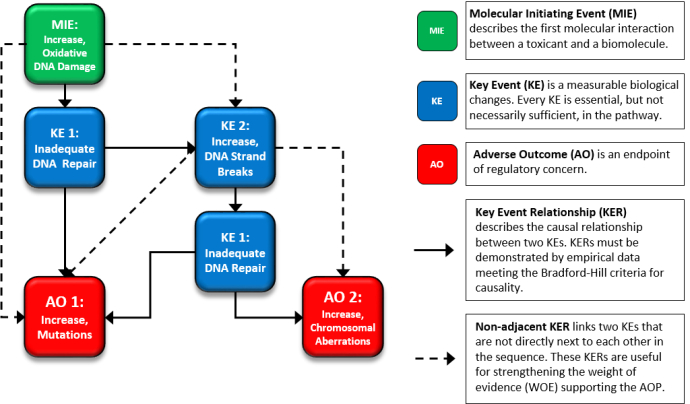
The March 2022 EMM Editor’s Choice article is “AOP report: Development of an adverse outcome pathway for oxidative DNA damage leading to mutations and chromosomal aberrations,” (https://doi.org/10.1002/em.22479) by Eunnara Cho, Ashley Allemang, Marc Audebert, Vinita Chauhan, Stephen Dertinger, Giel Hendriks, Mirjam Luijten, Francesco Marchetti, Sheroy Minocherhomji, Stefan Pfuhler, Daniel J. Roberts, Kristina Trenz, Carole L. Yauk.
Oxidative stress occurs when oxidants such as reactive oxygen species (ROS) overpower the cellular antioxidant capacity. This excess of ROS and other free radicals results in a broad range of oxidative DNA base lesions. Importantly, oxidative DNA base damage is associated with genomic instability (e.g., gene mutations and chromosomal aberrations), which is a hallmark of cancer.
In this report, first author Eunnara Cho (PhD candidate at Health Canada and Carleton University), corresponding author Carole L. Yauk (University of Ottawa and Carleton University adjunct), and colleagues provide an adverse outcome pathway (AOP) network linking oxidative DNA damage to gene mutations and chromosomal aberrations. This AOP represents part of a larger project spearheaded by the Genetic Toxicology Technical Committee (GTTC) of the Health and Environmental Sciences Institute (HESI) aimed at enhancing the use of mechanistic information in genotoxicity assessment by building empirical support for the relationships between relevant molecular initiating events (MIEs) and adverse outcomes (AOs).
AOPs are intentionally simplified, chemical-agnostic descriptions of toxicological pathways intended for broad applications. The MIE, or first molecular interaction between a toxicant and a biomolecule, of the AOP network reported here is increases in oxidative DNA damage. By design, this event includes the broad range of lesions caused by oxidizing agents. This event is connected to the adverse outcomes of mutations (AO1) and/or chromosomal aberrations (AO2) through measurable biological outcomes termed Key Events (KEs). Dr. Yauk and her colleagues anticipate this AOP will aid in the design of novel strategies for genotoxicity testing to protect human and wildlife health, as well as providing a foundation for development of additional genotoxicity-associated AOPs.
 2025 EMGS Program Chair
2025 EMGS Program Chair